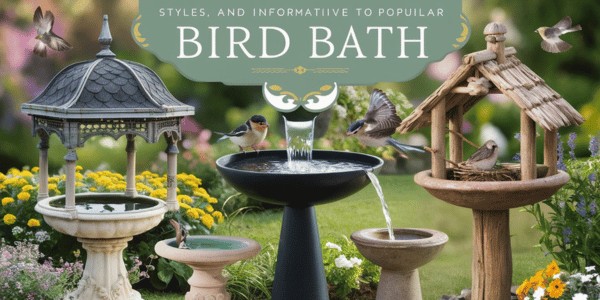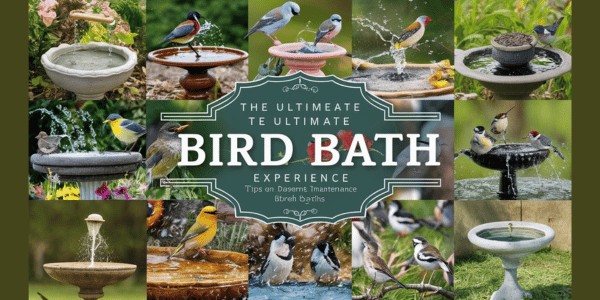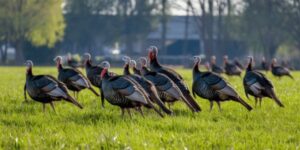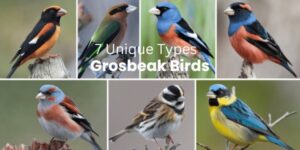Why Invest in a Bird Bath?
Bird baths are more than just decorative additions to your yard; they play a crucial role in attracting a variety of bird species. By providing a reliable source of water, you ensure that birds visit your yard not only for drinking but also for bathing, which is essential for their feather maintenance and overall health.
Benefits of Bird Baths
Attracting Birds
Bird baths act like magnets for bird species. They offer birds reliable water sources for both drinking and bathing, which is very important, particularly during dry seasons. A well-positioned bird bath can turn your backyard into a busy bird haven.
Promoting Bird Health
Water removes parasites and dirt, among other things, helping birds stay healthy and lively in their presence. The regular availability of clean water also helps them maintain the feathers necessary for insulation and flight.
The Importance of Water for Birds
All types of birds need water to survive since it is universal. While feeders attract some specific birds, a bird bath will attract more avian visitors. For instance, robins are rarely seen at feeders but always frequent bird baths. This makes a bird bath the magnet where all bird activities take place because they all need water.
Daily Bathing Rituals
Bathing is essential for maintaining the condition of feathers on birds’ bodies. Regular bathing aids in mite removal, redistributes protective oils, and ensures that feathers are correctly aligned, leading to better flying and predator-evading techniques. Keeping a well-maintained bird bath can do wonders for these animals’ lives.
You May Also Like: Where Can I Buy A Birdbath Near Me?
Choosing the Best Bird Bath
The process of selecting an appropriate bird bath entails considering several factors, such as material, style, and in detail below and functionality. We discuss these matters in detail below so that you can make an informed decision whenever making this choice.
Best Materials for Bird Baths
The kind of material used in making your bird bath determines how long it lasts, its maintenance requirements, and how attractive it appears to your visiting birds. Some of the commonly used materials include:
• Concrete: durable and stable, though heavy and challenging to clean.
• Plastic: lightweight and easy to clean but may not be as long-lasting.
• Glass: attractive, although fragile and slippery.
• Glazed Pottery: stylish and more accessible to clean but may break in cold temperatures.
• Copper: Copper is naturally resistant to algae and bacteria but should be treated with caution due to potential toxicity at high doses.
• Bronze: an expensive but durable quality that resists weather changes.
The choice of the material also depends on your climate, maintenance preference, and aesthetic objectives.
Ideal Colors for Bird Baths
There are particular colors that attract birds because they serve as signals for food or a safe environment. You may consider these colors if you wish to attract specific bird types:
• Yellow: attracts hummingbirds, warblers, goldfinches
• Blue: Appeal’s bluebirds or blue jays
• Red/pink: Draws hummingbirds.
• Orange: Favored by hummingbirds and orioles.
Avoid white, which could signal danger, scaring off potential birds from using your bath area.
You May Also Like: How to Use Apple Cider Vinegar to Clean Your Bird Bath

Popular Bird Bath Styles
Bird baths come in various styles, each with its advantages and disadvantages; here are some popular ones:
Classic Pedestal
Classic pedestal bird baths are popular for their elegant design and functionality. They typically feature a decorative basin on a sturdy pedestal. Common materials include bronze, brass, and resin, which offer durability and weather resistance.
Features:
Material: Options include solid brass, bronze, and resin.
Design: Many have a decorative lip for birds to perch and drink.
Durability: Weather-resistant and frost-resistant, suitable for year-round use.
Deck Mounted
Deck-mounted bird baths are an excellent addition to your outdoor space, allowing you to attract birds to your deck or balcony. Here are some options:
Good Directions Pure Copper Deck Mount Birdbath: This 18-inch artisan-hammered copper birdbath includes a decorative lip for perching and a durable black powder-coated steel mount.
Hanizi Deck Mounted Bird Bath: Made from lightweight, durable plastic with adjustable clamp-fitting decks up to 2 inches thick.
Monarch Abode Hand-Hammered Bird Bath: Features a 5.5-inch copper and black metal bowl, available at Lowe’s.
Hanging
A hanging bird bath can be an excellent addition to your garden, providing a place for birds to drink and bathe while adding a decorative touch to your outdoor space. Some options include:
Classic Bronze Hanging Bird Bath: This type is long-lasting and lovely and is usually made from resin or metal that is resistant to weather.
Copper-Hanging Bird Bath: It has natural antimicrobial properties; hence, the water stays clean.
Decorative Glass Hanging Bird Baths: These often have hand-painted designs and bring color into gardens.
Ceramic Hanging Bird Baths: These are strong and come in different forms and colors.
Ground Dwelling
Ground-dwelling bird baths provide a natural and accessible water source for birds and other wildlife. These systems are commonly made to be in harmony with the garden setting and can be made from stones, ceramics, or metals, among others. These include:
Durability: Resilient materials like weather-proof plastics or resilient metal.
Design: Low-profile designs that resemble natural puddles or streams, attracting a variety of bird species.
Maintenance: Easy cleaning and refilling for fresh water at all times.
Safety: Gentle slopes that allow easy entry and run-off for birds and other small creatures.
You May Also Like: 8 Things You Should Know Before Installing a Bird Bath
Assessing Functionality
In choosing a bird bath, functionality is more important than beauty. Think about the following matters:
Bowl Design
An ideal birdbath bowl should have shallow edges but be more profound to around 3 inches at its center, which will suit various species of birds.
Ease of Cleaning
Instead, choose a fountain that is easy to wash and replenish. This ensures the water remains clean and fresh throughout.
Addressing Common Bird Bath Issues
Several issues can prevent birds from using bird baths. These include:
Why Do Birds Poop in the Bird Bath?
After drinking, birds defecate to keep their weight low during flight. Regular cleaning, however, should not affect the cleanliness of such a bath.
Why Are Birds Not Coming to My Bird Bath?
Predators such as snakes, cats, or owls scare away birds, which might also avoid deep water or dirty sites where they risk contracting diseases. Thus, they prefer shallow water, like puddles placed near bushes, for safety; clean water and rock edges allow them easy access when taking a bath.
Can a Bird Bath Be Used in winter?
These items remain useful during the summer and winter seasons, although maintenance is essential during winter. The basin should, therefore, be situated so that it gets enough sunshine while preventing freezing by using heaters within it.
Do Birds Like Bird Bath Fountains?
Birds prefer fountains rather than stagnant bath waters because they move. The fact that these gadgets run continuously helps improve hygiene, thus reducing mosquito breeding cases, too.
How to Convert a Bird Bath into a Fountain
A solar-powered pump or electric pump can easily convert a bird bath into a fountain. By creating a flow of water, the bath will be more attractive to birds.
Concerns about Attracting Wildlife
However, bird baths are not only visited by birds but also attract other animals like raccoons and opossums. The solution is to clean the container regularly at night for all frequenters’ convenience.
Conclusion: The Ultimate Bird Bath Guide
One way to attract birds to your garden is to buy a birdbath. By choosing the right material, color, and style and maintaining it properly, you can create an inviting environment for these animals in your backyard.
FAQs: The Ultimate Bird Bath Guide
Q: How often should I clean my bird bath?
A: Bird baths should be cleaned at least once every week to avoid the growth of algae or bacteria on them.
Q: Can I use tap water in my bird bath?
A: Yes, fresh tap water is safe for bird baths.
Q: What can I do to keep cats away from my bird bath?
A: Pests like cats can be deterred by putting cat repellents such as motion-activated sprinklers around this area. Also, the basin should be located far away from any shrubs or trees where they might hide and pounce on birds visiting such places.
Q: Do I need to add anything to the water in winter?
A: To do this, antifreeze products should never be used; instead, heated basins must be run daily with warm water.
Q: What is the appropriate depth of water in a bird bath?
A: Birds prefer to bathe in shallow water, which should be no deeper than two inches.












2 Responses